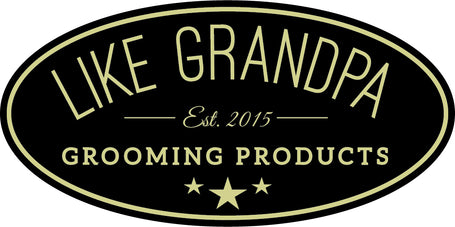Made in Canada
Three words that inspire pride, catch my attention, and often justify me paying a little more - Made in Canada. Damn, I love those words. The closer to home something is made, the harder it is for me to stop talking about it.
I was scrolling through our Instagram feed the other day, when I spotted a claim from a company saying that a particular shaving product was Canadian made. Well, being a shave enthusiast with a background in manufacturing, I was almost certain that it was made overseas. The fact that it was almost identical to a well known Chinese product was a dead give away. So, I took a minute, contacted the company to confirm I was correct and then reached out to the store that had inadvertently false advertised. I’m sure it was an honest mistake, or was it?
There is big money to be made out there passing off imported goods as local. Higher prices means better margins, which means better profitability for stores and resellers. With the market being flooded with all the imported goods we could ever want and no exclusivity where it is sold, retailers need a step up.
Enter the idea of “local-washing”. Where a company passes something off as locally made that is not, or presents imported products next to locally made goods to give the impression that everything is made local. This may seem like nothing, but to us makers this is a big deal.
With the growing support for handmade items, and local products from local companies, there is also a growth of “makers” and individuals that tip toe that grey zone on ambiguity. This comes in many different forms. Some may design their product and outsource it overseas for manufacturing. This is often disguised as “designed in Canada”. Others may import a product with their logo on it and sell it next to products they actually made. Ever wonder why almost every Beard Comb or Beard Brush on the market comes in only four or so different designs?
Then there is the category that we call “decorated in Canada”. This is where a company will buy the base functional pieces, and then apply a design or process, and pass it off as “Made in Canada”. Now this is where things get tricky. There is actually a threshold set forward by the government for value added processing that stipulates if a product qualifies as Canadian made. When you take that mug or pencil from overseas, press a clever word into the face of it, and call it Canadian made, I can assure you that most of the time it does not meet this threshold. For me, I simply say, when the base function of something is not made in Canada, it is not locally made.
But should we care? YES! Not only does local-washing directly hurt local makers, but it dilutes the quality and banner of 'Canadian Made'. If a product is advertised as handmade, locally made, or made in Canada, it sure better be!
Now, we all realize that there are some products that will not be made locally. Whether its the cost is too high, or there isn’t the manufacturing support and that is okay! We aren't saying don't buy those items, we definitely do sometimes. There are some great products out there, no matter where they are made!
As a consumer, we just want transparency and to understand what we are actually buying.
So how do you protect yourself from local washing...
This isn’t always the easiest thing to do. There are endless tricks and ways that companies can tiptoe the line, but here are a few ways to start protecting yourself.
-
Ask “Where is this manufactured” not “is this Made in Canada/locally”. Many individuals assume Canadian Companies sell Canadian made goods, and have an automatic response to this. Usually when you ask where it is manufactured, you will get answers like “the mug made in China but we add our own design onto it".
-
Reach out to the company directly.
Often retailers might not know, or staff make mistakes. Email the company making the product and ask them where it is manufactured.
-
If something looks too good to be true, ask questions.
If the product looks identical to imported goods, it means one of three things: They are really good at what they do and exceed industry standards (Canadian manufacturers often do), they are working with a Canadian Manufacturer, or they are importing.
-
Ask questions about how it is made.
If you are talking directly to the maker or company making it, they should have a good idea of the processes and steps involved to manufacture their product. If they cannot detail how the product goes from nothing to something, there might be something wrong. As a maker, I LOVE chatting about my craft, and most other makers are the same.
-
Beware of ambiguous language.
This can come in the form of, “We do have Canadian suppliers”, or “a portion is Made in Canada”. If this is the case, they are likely tip toeing the line. Ask which portions are made here, or ask why a larger portion isn’t made here.
There is big money to be made passing manufactured and imported goods off as handmade of Made in Canada. Make sure you are informed and asking the right questions to ensure that your hard earned dollars are being spent here in Canada, if that's what you'd like it do! We always want to educate, no matter what you decide to buy!
